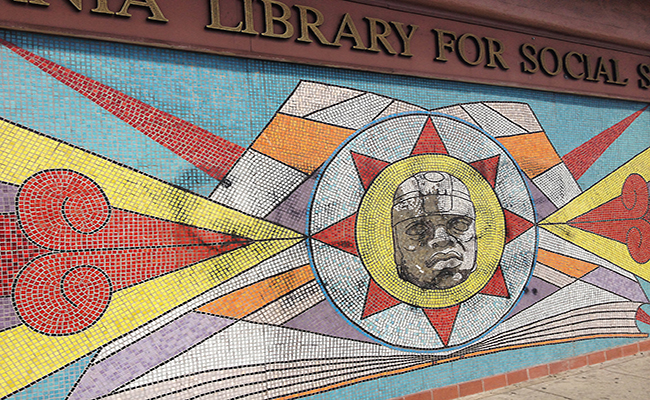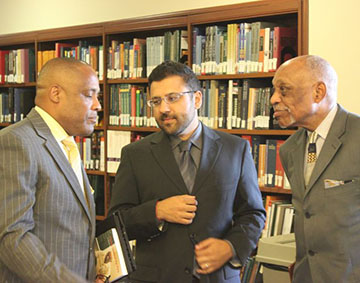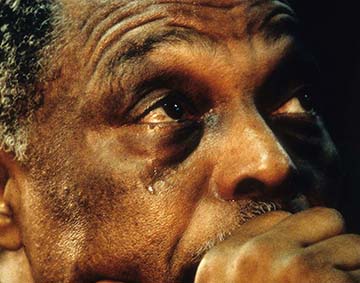Black History in LA webcast
The Los Angeles Urban League (LAUL) and Time Warner Cable (TWC) have teamed up to present on February 8, 2013 a free interactive webcast with civic leaders who will share insight on Black History in LA. The “There is Black History in LA” webcast will take place from 1:30pm – 2:30pm PT and will feature new LAUL CEO and President Nolan V. Rollins, Reverend Cecil “Chip” Murray and community activists “Sweet Alice” Harris and John W. Mack.
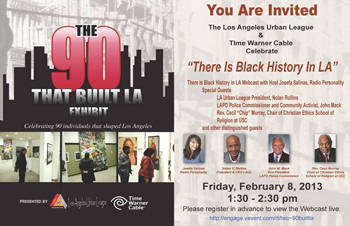
The webcast (which can be accessed at http://engage.vevent.com/rt/twc~90builtla) offers an opportunity for the LA community to interact with the aforementioned individuals and host Josefa Salinas of KTLK am 1150 and HOT 92.3, and learn more about the history of civil rights in LA. It builds on an exhibit – “The 90 That Built LA” – at the Museum of African American Art (MAAA http://www.maaala.org/) which opened on December 12, 2012 and celebrated LAUL’s 91 years of existence by honoring 90 individuals who have fought for civil rights and equality. In addition to the webcast and other Black History Month events (see Facebook post), LAUL will co-present a panel featuring USC Annenberg School for Communication and Journalism Dean Ernest J. Wilson III, Mack and USC Dornsife African Studies Director Francille Rusan Wilson, who will discuss the PBS special “The PowerBroker: Whitney Young’s Fight for Civil Rights” after it is screened at the USC Annenberg Auditorium on February 11. (http://annenberg.usc.edu/Events/2013/130211Powerbroker.aspx)
LAUL VP of Marketing & Communications Chris Strudwick-Turner said her team had the vision for the exhibit, which features the tagline “We Built LA” to assert the contributions of Blacks and other minorities to LA’s development, several years ago and was able to turn it into reality thanks to TWC. “Like us, they saw the vision of what this exhibit could be and they have been with us every step of the way as a presenting sponsor to put this exhibit together for the community,” said Strudwick-Turner in a December statement to the press.
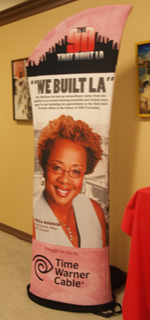
Members of the TWC Diversity and Inclusion team recently visited the exhibit–located near Leimert Park at the MAAA’s space at the Baldwin Hills Crenshaw Mall’s Macy’s third floor–on February 1, 2013 to commemorate 15 months of partnership between LAUL and TWC and promote the aforementioned webcast. TWC Regional VP of Operations Debi Picciolo said in a press statement her company was “proud of our long term partnership with the Los Angeles Urban League, and delighted we could help bring this exhibit to the community.”
One of the most notable aspects of the webcast and exhibit is the rare opportunity for young people in LA to delve deep into Black history in the city thanks to the presence of individuals like Reverend Chip Murray. Murray, who grew up in the South during segregation and whose insight on civil rights movement like the 1992 LA uprising was featured in a 2012 Intersections South LA story (http://www.bit.ly/UDlnGw), will answer questions from webcast attendees and discuss the struggle that made equality possible. Murray and his fellow panelists plan to highlight trailblazers from the distant past such as Biddy Mason–a slave that walked several hundreds of miles to LA to gain her freedom–in addition to former LA Mayor Tom Bradley, who made history in LA as the first Black mayor of a major American city.
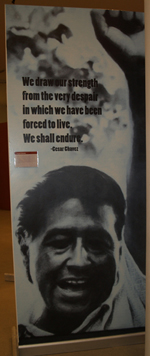 Angelenos can discover historic art and photos commemorating LA trailblazers in fields such as cinema, civil rights, music and media; Sir Sidney Poitier, Cesar Chavez, Ella Fitzgerald and Paula Madison, respectively, at “The 90 that Built LA” exhibit through March 7, 2013.
Angelenos can discover historic art and photos commemorating LA trailblazers in fields such as cinema, civil rights, music and media; Sir Sidney Poitier, Cesar Chavez, Ella Fitzgerald and Paula Madison, respectively, at “The 90 that Built LA” exhibit through March 7, 2013.
Elias Kamal Jabbe is the Founding Editor of MulticulturalMatters.org (http://MulticulturalMatters.org).
Kingdom Day Parade Spotlights King’s Anti-Poverty Efforts
Photos by Walter Melton and Susan Fitzpatrick
Thousands of people lined the streets of South Los Angeles Monday for the 27th annual Kingdom Day Parade, Southern California’s largest Martin Luther King Jr. Day observance.
The parade began at 11 a.m. at Martin Luther King Jr. Boulevard and Western Avenue and headed west on Martin Luther King Jr. Boulevard to Crenshaw Boulevard, then south to Vernon Avenue, concluding at Leimert Park.
The parade featured 30 marching groups, 20 floats, 17 drill teams, 16 marching bands, seven color guard teams and three dance groups.
One of the floats was the “Occupy King’s Dream” float, honoring Martin Luther King’s attempts to end poverty. The Community Coalition was an organizer of that float.
The Rev. Hae Hak Lee, a South Korean Presbyterian minister, was the parade’s international grand marshal. Second District Los Angeles County Supervisor Mark Ridley-Thomas was grand marshal of the parade. Ridley-Thomas of the executive executive director of the Southern Christian Leadership Conference of Greater Los Angeles for 10 years. Dr. King was the SCLC first national president.
Organizers said this year’s parade was a bit smaller this year, and some parade-goers say it lacked the spark of previous years.
Workers unite in honor of Dr. King
On the 43rd anniversary of Martin Luther King’s assassination, Los Angeles area union members gathered to honor him and to continue his legacy of fighting for workers’ rights. Held at F.A.M.E. Church in South L.A. Monday evening, thousands were in attendance including Los Angeles County Supervisor Mark Ridley-Thomas and L.A. City Controller Wendy Gruel.
The unity rally began with moving clips of Dr. King marching and speaking of the labor injustices faced in his time. One clip in particular brought loud applause from the audience when Dr. King said, “We are tired of working full-time jobs for part-time wages.” Intertwined were clips of workers protesting this year in Wisconsin and Ohio.
Maria Elena Durazo, of the L.A. County Federation of Labor, AFL-CIO, was the mistress of ceremony and she reminded everyone that Dr. King was in Memphis on behalf of sanitation workers when he was killed. She introduced the program’s theme: “War has been declared on working class Americans and we must unite.” Stressing that neither race nor location should be a factor in this new labor movement, she praised California workers who went to Wisconsin to join labor protests as well as the nearly 20,000 workers who gathered in Pershing Square last week.
Laphonza Butler, SEIU United Long Term Care Workers’ President, chastised groups like the Tea Party, claiming they are trying to change America’s values to that of greed and selfishness, ignoring the pleas of the working class. She said that Republicans are holding America hostage with the threat of a government shutdown if Congress doesn’t agree to cut funding for programs that are sorely needed. She pointed out that almost five million people are in poverty in California and children in the state are last, ranking 50th in the nation in standardized testing. Butler emphasized that now is not the time to be silent about the challenges ahead and that the fight of the 1,300 sanitation workers in Memphis must be continued.
Also in attendance were Rev James Lawson and William Lucy, both of whom were instrumental in the Memphis sanitation workers’ strike, working alongside Dr. King. Workers like Oscar Montelongo of the Department of Water and Power and Jackie Brown from the Lynwood School District were given an opportunity to speak. Brown is a school cafeteria worker at Rosa Parks Elementary School, a name she said makes her feel proud because of Parks’ heroism. She was concerned with students’ well-being if she and other workers lost their jobs due to cut-backs.
Though the day marked the anniversary of Dr. King’s assassination, it was not a somber event; it was a celebration of what King had accomplished, an opportunity for laborers to be re-energized for the work ahead and a call-to-action for American workers.
Judge Kelvin Filer talks growing up in Compton

Kelvin D. Filer is a Los Angeles Superior Court Judge in Compton.
A native of the hub city, Judge Filer has been on the bench since 2002 after being appointed by former Gov. Gray Davis.
We sat down with Judge Filer inside his Compton chambers.
Photo courtesy of University of California Santa Cruz
Read more on this topic:
Compton student wins $40,000 for college from the free throw line
Arlon Watson given long sentence for murder of Compton teenager
Community reflects on Rodney King beating 20 years later
Listen to an audio story from Annenberg Radio News:
—–
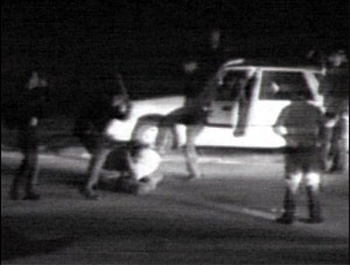 You can’t hear much on the video tape. But the pictures of a man on the ground beaten by a crowd of police officers startled the nation. His name was Rodney King – a name that would become synonymous with Los Angeles Police Department brutality.
You can’t hear much on the video tape. But the pictures of a man on the ground beaten by a crowd of police officers startled the nation. His name was Rodney King – a name that would become synonymous with Los Angeles Police Department brutality.
“When I watched the beating, it was a severe one. With a number of officers it just kept going on and on,” said Paul Skolnick, who worked as an assignment editor at KNBC at the time of the beating. His station was one of many that played the video shot by bystander George Holliday.
“The Rodney King beating brought to the forefront something that people knew about but seldom discussed and that was how people were treated by law enforcement and really in all city services,” Holliday added. “Moving on took quite some time. We still think about those incidents.”
For many African American residents, scenes of the beating touched a raw nerve.
Daphne Bradford, a teacher in South Los Angeles, said it reminded her of the civil rights era.
“They put the dogs on you and you were fighting for your rights,” Bradford said. “And you see this happening during your time and you’re like, really?”
Four white officers were tried in the beating of King, when they were acquitted in April of 1992. South Los Angeles and other parts of the city erupted in violence.
Bradford remembers that at the time she was heading home from a heated community meeting at First AME church.
“The one thing I remember and that I will never forget that when I drove I had to drive through the fire, the smoke and all that stuff,” Bradford said. “I was just hoping that the tires on my car didn’t melt. Because it felt like hell on earth. I was just praying all the way home that nobody shot my windows out, that nobody killed me, that my tires didn’t melt. That I could just make it.”
After she made it through a fire that was like an inferno, she knew she would make it through the rest of the riots.
The riots are painful memories for many Korean Americans as well.
Ae Kyung Kang was living in Gardena. The family had an auto parts business. When the riots broke out her husband wanted to get a gun, but Kang didn’t want him involved in the violence. The trauma of having her business looted and eventually closed is still fresh.
“We lost everything,” Kang said. “At the riots—many businesses is broke and they close out. After that our business is closed. Closed.”
Kang faults the police for not intervening: “They did nothing. Just chewing the gum and they laughing. And just watching.”
Civil rights activist Earl Ofari Hutchinson explains why Korean American store owners became targets in the riots.
“There was a feeling that they were disrespectful, that they were just in the community to make money,” Hutchinson said. “They wouldn’t hire you. That they weren’t part of the community – so they were easy and soft targets.”
Kang’s family went back to Korea and lived there for many years. They eventually returned to the United States and now own a dry cleaning business in Torrance.
Ethnic tensions and poverty, some of the things that led to the riots, still persist – but Police Chief Charlie Beck talked about what’s changed in the police department.
“Inargulably we are a much better police department in the intervening twenty years,” Beck said.
Beck said the L.A.P.D has an approval rating of 83 percent. In 1992, there were 90,000 violent crimes; last year, only 20,000.
The police department has changed as well. The police chief has term limits and serves at the pleasure of the mayor.
Jasmyne Cannick is a communications strategist in West Adams. She noticed changes in the L.A.P.D.
“We see a lot more black officers in leadership, a lot more black female officers on the street,” Cannick said.
Technology has changed things too, she added.
“I think people, especially officers are a lot more careful with what they do in public because everyone has a phone,” Cannick said. “Sixth graders walk around with phones; senior citizens walk around with video on their phones.”
Bradford still sees the history of the riots when she drives around South L.A.
“When you see a building that’s vacant, or just a lot there,” Bradford said. “You kind of think, I wonder if that’s still from 1992 when they burned it.”
What do you remember of the Rodney King beating and the 1992 riots? We want to hear from you.
Lawsuit settlement changes system at Los Angeles’ largest juvenile detention center
Listen to the audio story:
—–
In January, the American Civil Liberties Union, Public Counsel and the Disability Rights Legal Center sued Los Angeles County for failing to educate hundreds of young men at Challenger Memorial Youth Center in Lancaster. It is Los Angeles’ largest juvenile detention center.
ACLU Chief Counsel Mark Rosenbaum described graduation day for the lead plaintiff, Casey A., who is representative of many detainees.
“He was unable to read a single word on his diploma,” Rosenbaum said. “Didn’t know what a diploma was, even though he was handed one. And when we asked him where he wanted to have lunch to celebrate, he said Denny’s because there were pictures on the menu, and that was the only place he could order.”
Casey and other graduates will now be eligible for remedial education.
On Wednesday, the Board of Supervisors agreed to a settlement agreement that will chart a new course for Challenger, a place long seen as the “black hole of Los Angeles’ juvenile justice system.”
Strongly worded criticism is not new for Challenger. A 2004 Grand Jury described the six camps at Challenger as having “urine and dirty clothing all over the floors,” “abundant filth” and “no discipline.” Later, violent inmate fights at the center were found posted online.
Shawna Parks of the Disability Rights Legal Center speaks of exciting developments.
“We’re also going to be giving them things they never had before — books — to read, a library, a librarian.”
Under the settlement, teachers will be held to much higher standards. They will be supervised by a team of experts who will closely observe them and demand better outcomes. There will not be high levels of substitute teachers or unqualified teachers.
Rosenbaum, the plaintiffs and their parents demand fairness in their access to education.
“Why should these kids have any different qualified teachers? Then the teachers where your kids go? Then the teachers where the best public schools are?”
Rosenbaum says there are economic reasons for doing the right thing, too. It costs $80- to $100,000 a year to incarcerate an adult. And there is a 60- to 70 percent recidivism rate for graduates of Challenger.
“If one didn’t care a bit about these kids or about their futures, but mainly looked at this case as a matter of dollars and cents, this is the best economic move that this county has made in decades,” Rosenbaum said.
Better education, vocational training and transition counseling will keep more graduates out of the justice system.
Representatives from the Department of Probation and the Los Angeles County Office of Education were pleased with the results and speed of the settlement. And, they say the reforms coming will set a precedent, both within Los Angeles and nationally.
El Movimiento captures Chicano history and foreshadows its future
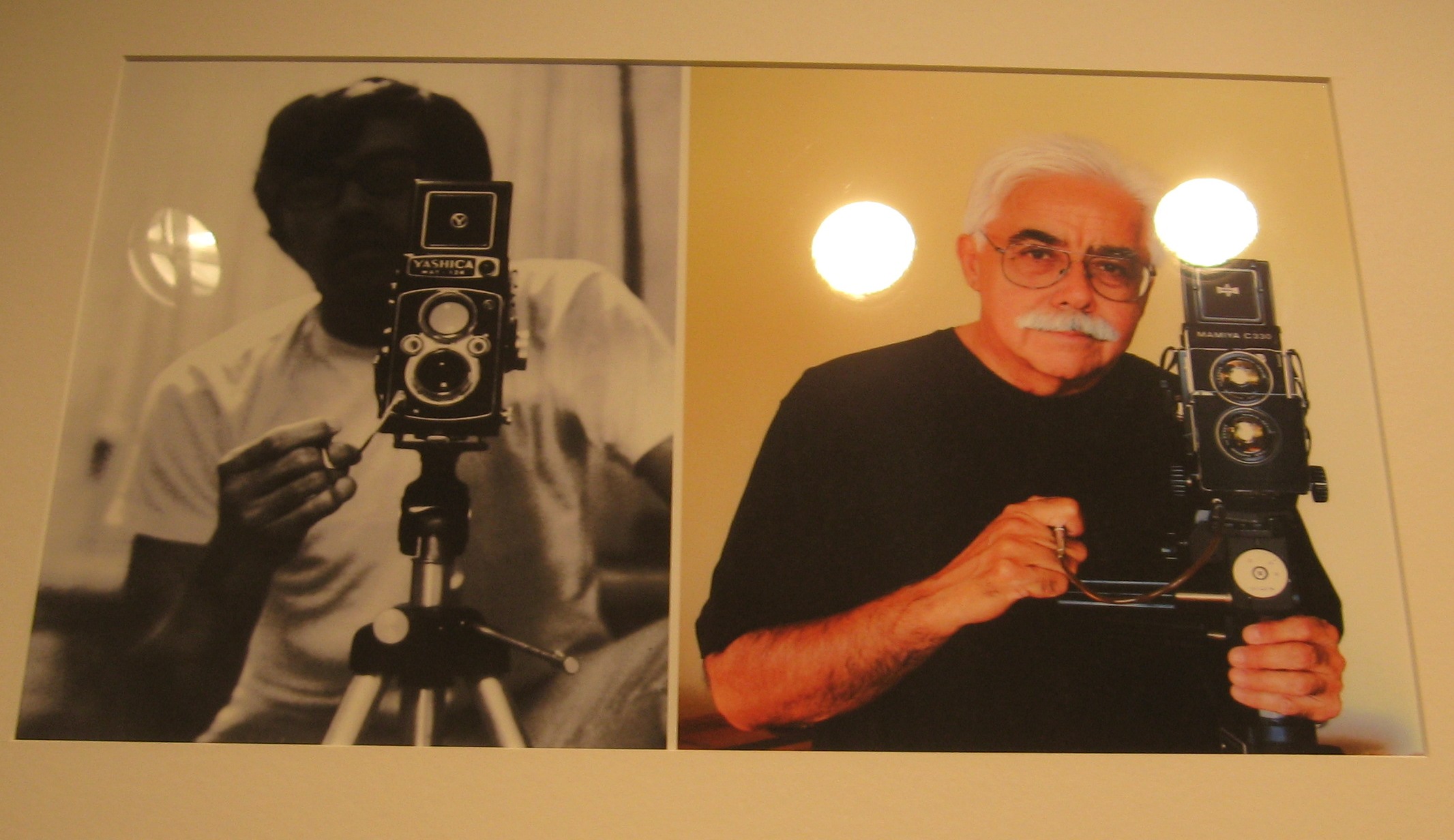
Oscar Castillo’s photograph, aptly named "Solitude at Echo Park," is a familiar image. The inner-city parks of Los Angeles are still places of refuge and withdrawal for the heavy-hearted, even 30 years after Castillo captured the subtle dynamic through his lens. The man in the cowboy hat still sits by the lake, though his clothes and his name have changed.
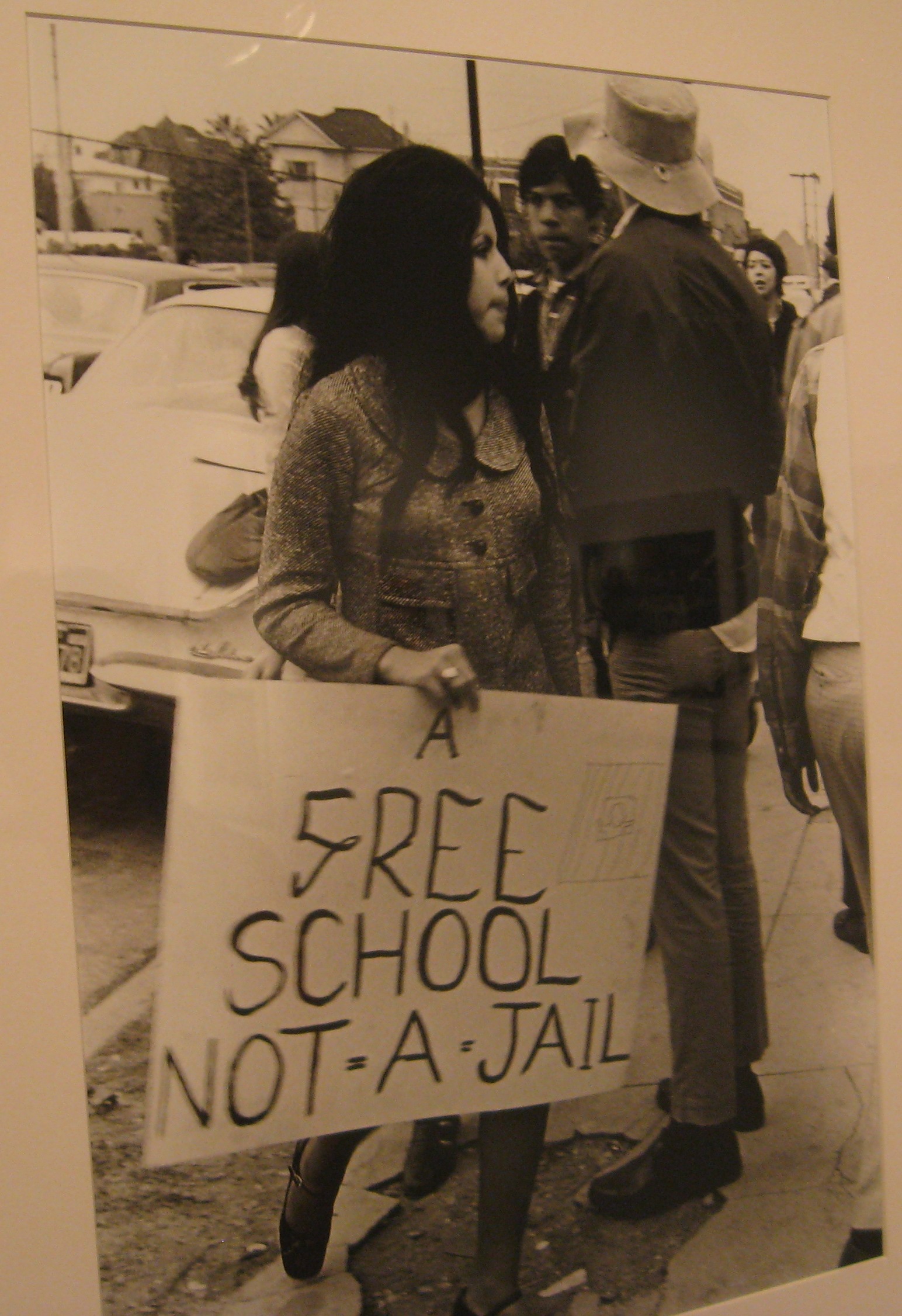
A few years later, while studying at California State University, Northridge, Castillo was inspired by the struggle of farm workers in California’s Central Valley and began following the fledgling Farm Workers Union as it started to organize. His photographs of Cesar Chavez reveal personal admiration for the Chicano Civil Rights leader. The shots are reverent; Chavez is surrounded by inspired workers and awed children, or silhouetted against the darkness as he addresses a crowd.
The collection is now being exhibited at the Latino Museum of History, Art and Culture, housed downtown on Gallery Row at the Los Angeles Theatre Center. At an opening reception, Castillo said that he hoped his work would inspire people to "look at their own community and family, and the beauty around you." Castillo added that strong, positive images of the Chicano Civil Rights Movement are necessary to help purge negative stereotypes persistent in the city, from the past to the present day.
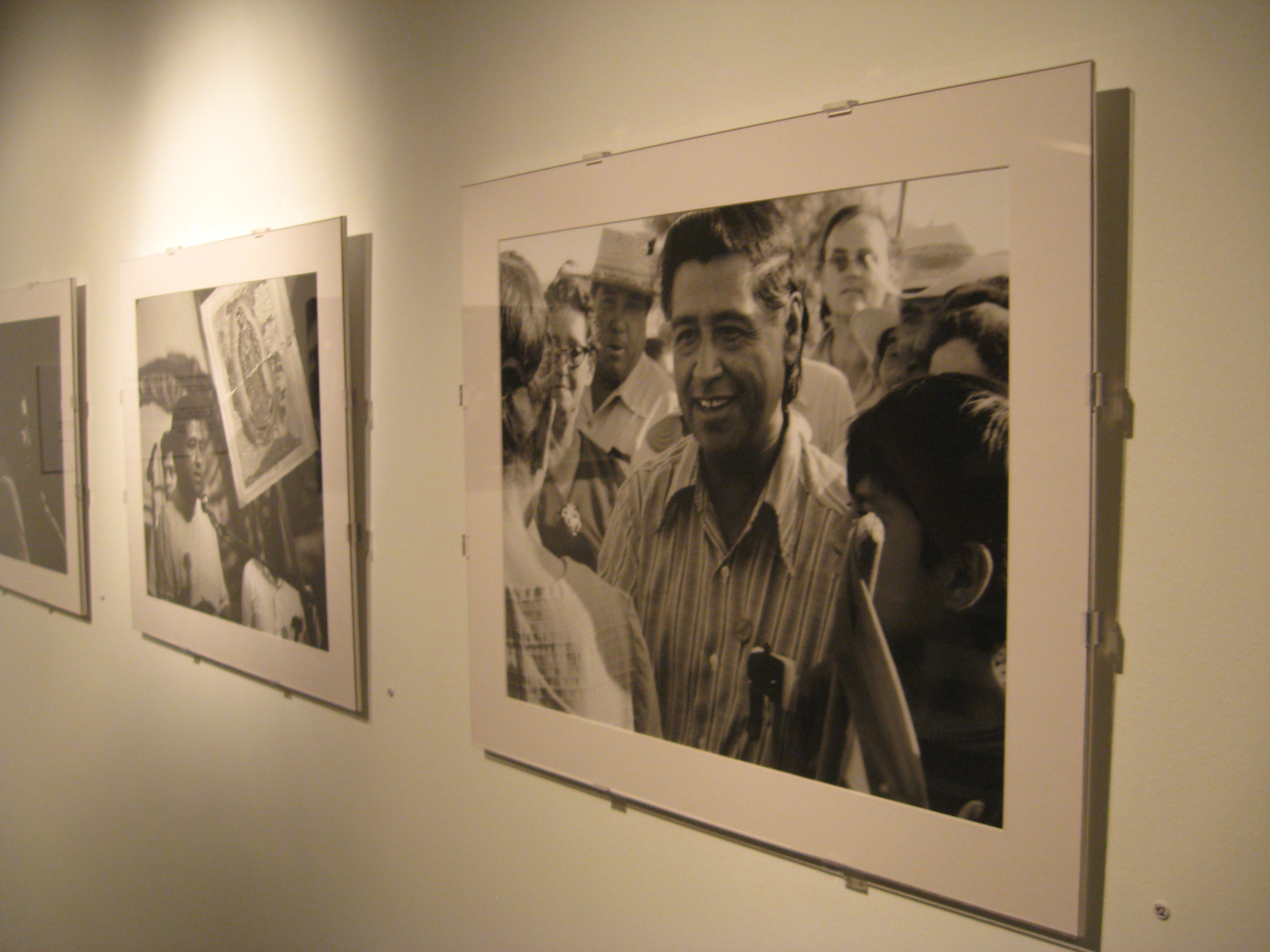
And yet, the youthful crowd at the reception proved that these iconic photographs hadn’t lost their poignancy. A group of Latino teenagers mingled around the images of the 1968 Roosevelt High School protest, perhaps recalling some recent experience fighting the LAUSD’s budget cuts. A young woman stood beside Cesar Chavez, reading the history of the United Farm Workers Union on an accompanying placard. .jpg) Later, an African-American man, dressed in multi-colored, tie-dye pants and a customized leather jacket, leaned in and adjusted his glasses to get a closer look at four similarly-clad Latino men inside one of the frames. "Los Four," taken in 1974, shows artist-friends of Castillo’s smiling happily beside their bright, spray-painted mural, designed to promote graffiti as art, not vandalism.
Later, an African-American man, dressed in multi-colored, tie-dye pants and a customized leather jacket, leaned in and adjusted his glasses to get a closer look at four similarly-clad Latino men inside one of the frames. "Los Four," taken in 1974, shows artist-friends of Castillo’s smiling happily beside their bright, spray-painted mural, designed to promote graffiti as art, not vandalism.
Castillo himself manned the sidelines with a camera around his neck, the shy and natural observer he claims to have always been. Meanwhile, his shared perspective took on new resonance for the viewers wandering the room. It may have been a different year and a different fight, said Castillo, but the social atmosphere remains the same. "From Vietnam to Iraq," he said, "history repeats itself."









